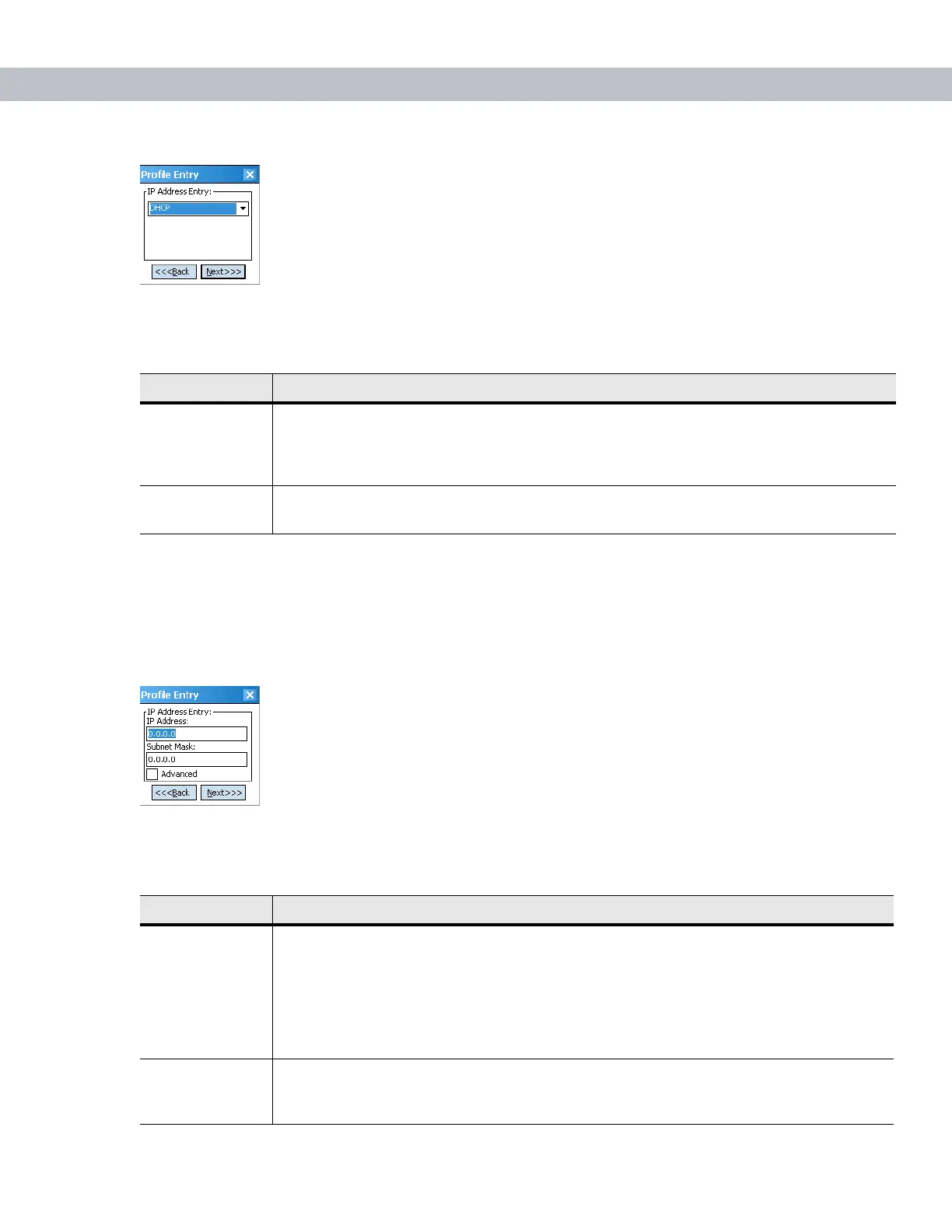Wireless Applications 7 - 17
Figure 7-24
IP Config Tab (DHCP)
Select either
DHCP or Static from the drop-down list and tap Next. Selecting Static IP displays the IP Address
Entry
dialog box. Selecting DHCP displays the Transmit Power dialog box.
IP Address Entry
Use the IP Address Entry dialog box to enter the IP address and subnet information.
Figure 7-25
Static IP Address Entry Dialog Box
Table 7-12
IP Mode Options
Encryption Description
DHCP Select Dynamic Host Configuration Protocol (DHCP) from the IP Mode drop-down list to
obtain a leased IP address and network configuration information from a remote server.
DHCP is the default setting for the EDA profile. When DHCP is selected, the IP address
fields are read-only.
Static Select
Static to manually assign the IP, subnet mask, default gateway, DNS, and WINS
addresses the EDA profile uses.
Table 7-13
Static IP Address Entry Fields
Field Description
IP Address The Internet is a collection of networks with users that communicate with each other. Each
communication carries the address of the source and destination networks and the
particular machine within the network associated with the user or host computer at each
end. This address is called the IP address (Internet Protocol address). Each node on the
IP network must be assigned a unique IP address that is made up of a network identifier
and a host identifier. Enter the IP address as a dotted-decimal notation with the decimal
value of each octet separated by a period, for example, 192.168.7.27.
Subnet Mask Most TCP/IP networks use subnets to manage routed IP addresses. Dividing an
organization's network into subnets allows it to connect to the Internet with a single shared
network address, for example, 255.255.255.0.

